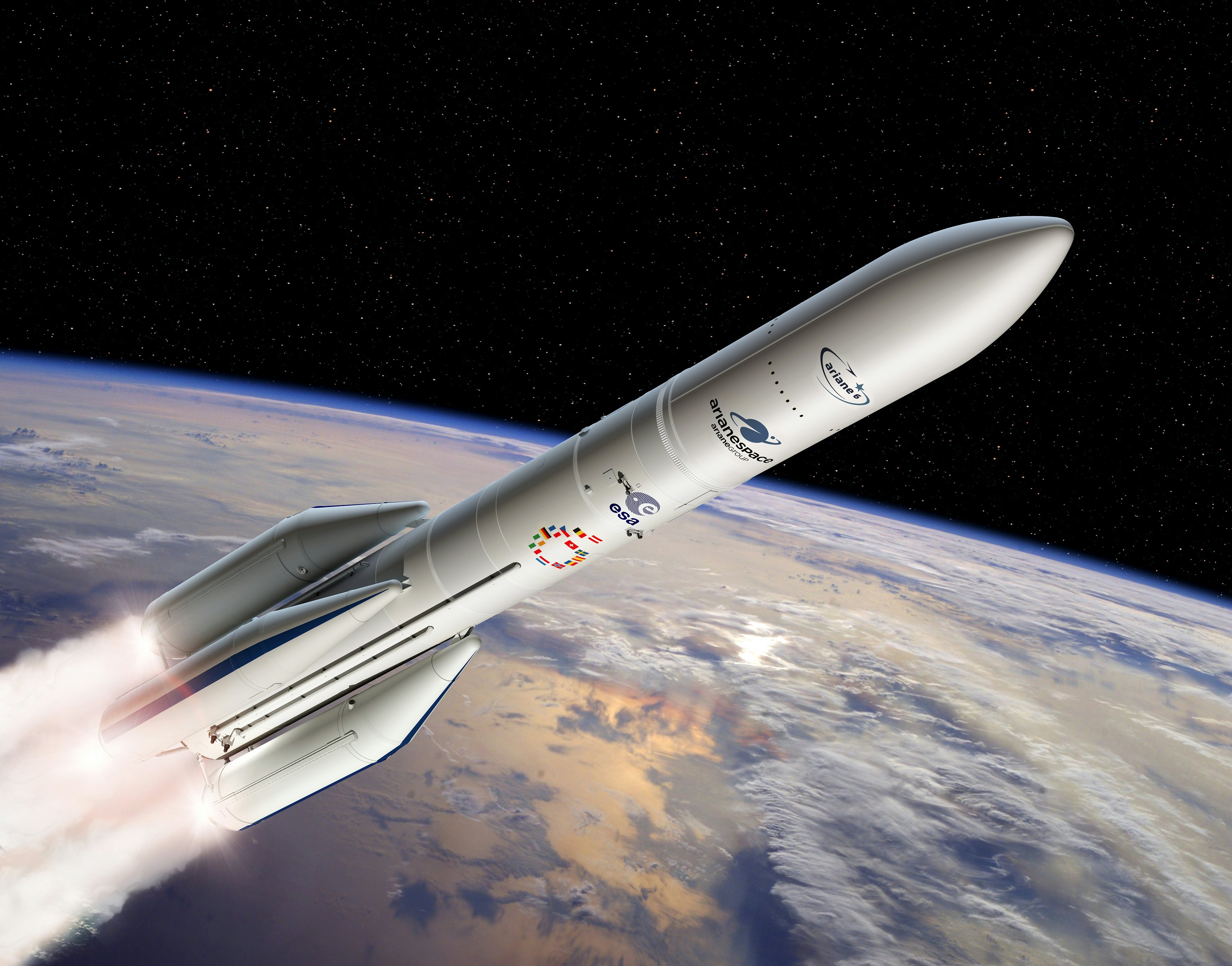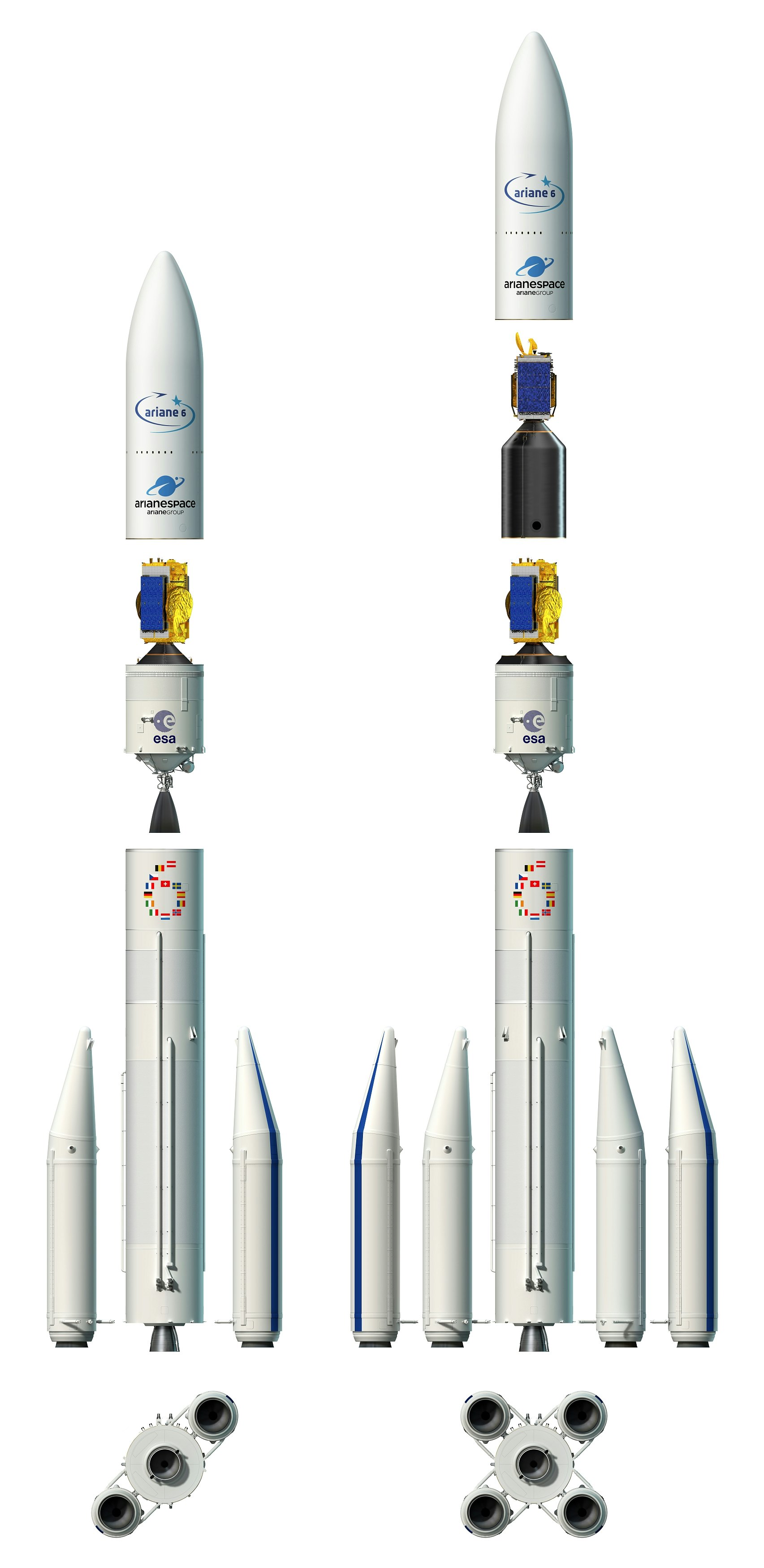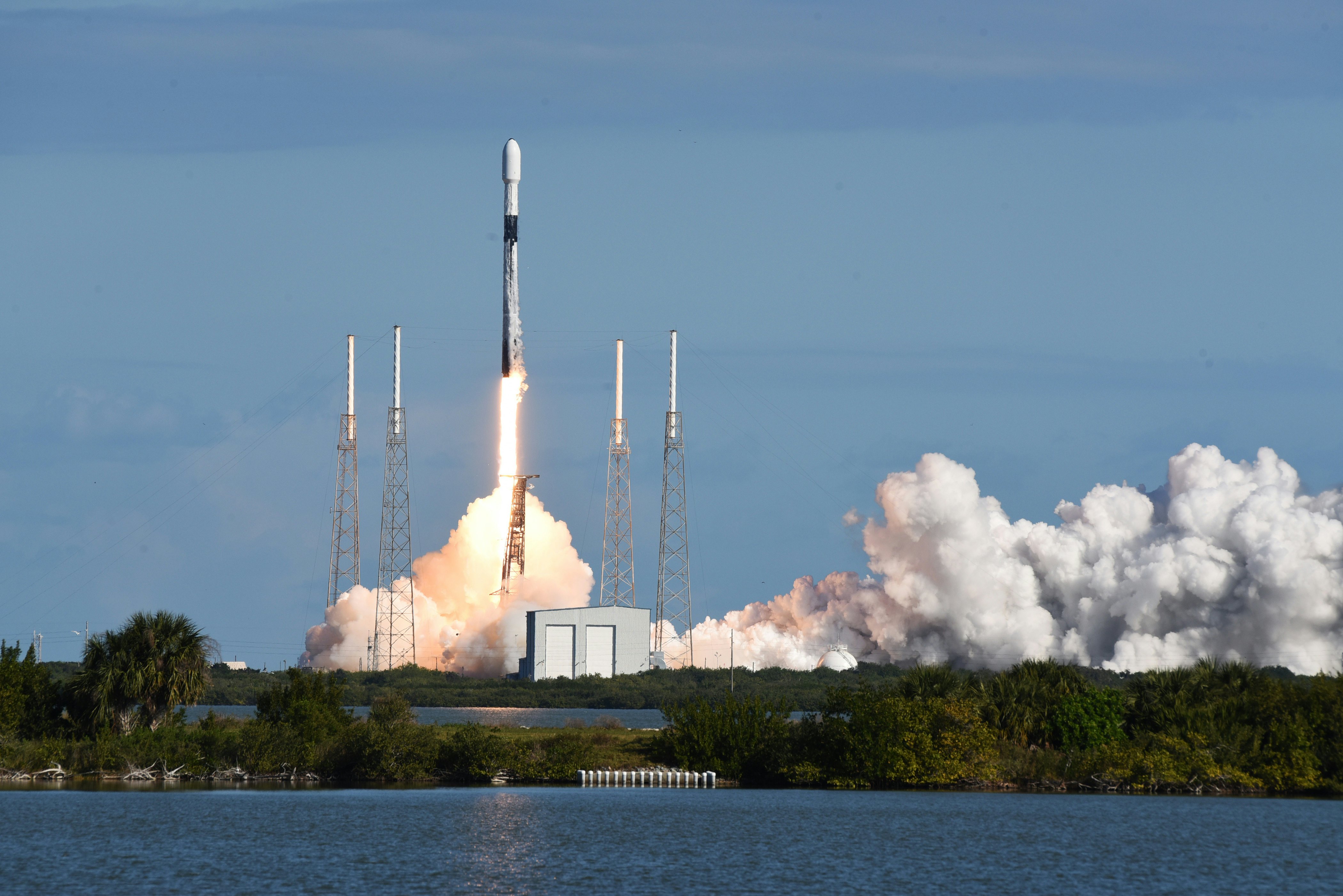
The Ariane 6 is here. On Tuesday, the European Space Agency launched the 184-foot-tall spacecraft on its inaugural flight from Europe’s Spaceport in French Guiana. The feat comes years behind schedule and one year after its predecessor, the workhorse Ariane 5, flew for the last time.
The Ariane 6 will take the Arianespace fleet to the next level. The modular design enables the rocket to take on light and heavy launches, adapting to the client’s needs. It can lift off with the power of either two or four boosters. It also offers two lengths for its fairing, the tip of the rocket that carries satellites into space. Ariane 6’s upper stage Vinci engine can also reignite in space, which means that on a single launch, the rocket can deliver several different missions into their orbits. ESA expects it to be a lot cheaper to launch than its predecessors.
But Arianespace still faces tough competition from SpaceX, which currently operates its semi-reusable Falcon 9 and Falcon Heavy rockets to provide launch services. SpaceX is already looking ahead to the fully-reusable Starship, which can lift more than ever into space. The Ariane family, unfortunately, is not reusable..
CEO Elon Musk has previously criticized European efforts in the emergent new space race. In March 2021, he wrote on X: “They are aiming too low. Only rockets that are fully & rapidly reusable will be competitive. Everything else will seem like a cloth biplane in the age of jets.”
Here’s what you need to know about how they compare.

Ariane 6 vs SpaceX: How much can it send to low-Earth orbit?
The Ariane 6 will send up varying amounts depending on the booster configuration. The two-booster version, known as Ariane 62, can launch 4,500 to 5,000 kg (9,920 to 11,023 pounds) to geostationary transfer orbit — where the Vinci engine would place a satellite on into the first leg so the mission can transfer towards its final orbit — or 6,500 kilograms (14,330 pounds) to a nearly polar, low-Earth orbit.
In the four-booster configuration, known as Ariane 64, the rocket can launch payloads of around 11,500 kg (25,353 pounds) into geostationary transfer orbit and 21,600 kg (47,620 pounds) into low-Earth orbit.
In its expendable configuration, the Falcon 9 Block 5 (the only variant in operation at the moment) can launch a similar amount to the four-booster Ariane 6. It can send 8,300 kg (18,300 pounds) to geostationary transfer orbit and 22,800 kg (50,265 pounds) to low-Earth orbit. The Falcon Heavy expands on this with the ability to launch 63,800 kilograms (140,660 pounds) to low-Earth orbit.
The Starship is set to blow these figures out of the water, with the ability to send 100,000 to 150,000 kgs (220,000 pounds) to low-Earth orbit. Its most recent launch test flew in June 2024.

Ariane 6 vs. SpaceX: Is it reusable?
In 2014, SpaceX first successfully landed a Falcon 9 booster. This component of the rocket, Musk has claimed, comprises around three-quarters of the total rocket price. By 2021, SpaceX was recovering 30 boosters successfully in a year. In April 2024, SpaceX hit a major milestone: 300 total booster recoveries. SpaceX also recovers the boosters used with the Falcon Heavy rocket.
The company has also started attempting to recover the protective fairing that protects the satellite during launch. SpaceX first successfully recovered a fairing in 2019, and it successfully recovered 13 in 2021.
The upcoming Starship should take this to the next level. SpaceX has designed the rocket to be entirely reusable, which means that the booster and ship can return to Earth for re-use after a flight.
The Ariane 6 is not reusable. It stems back to a design decision in 2014, when the space agency chose to stick with expendability. France’s economy minister, Bruno Le Maire, admitted at a 2020 conference that “in 2014 there was a fork in the road, and we didn’t take the right path.”
“We should have made the choice of the reusable launcher,” Le Maire said. “We should have had this audacity.”

Ariane 6 vs. SpaceX: How much does it cost to launch?
In January 2021, Politico reported that the Ariane 6 could launch for as little as $77 million. That’s a steep discount from the $177 million price tag for the Ariane 5.
In October 2023, Ars Technica reported that the Ariane 6 price cut won’t be that large, and roughly $98 million per flight instead. Inflation is partly to blame, according to Arianespace leadership.
SpaceX’s website previously listed the cost of a Falcon 9 launch at $62 million. But CNBC noted in 2020 that the United States Air Force contracts paid around $95 million per Falcon 9 launch. SpaceX estimated the costs for each launch at around $30 million each.
In November 2019, Musk suggested that a Starship could launch for around $2 million each. He’s held that stance into 2024, according to Space News, and still projects a price tag of $2 million to $3 million. If Starship reaches that price point, it will be impressively competitive.
Ariane 6 vs. SpaceX: Where do they launch from?
The Ariane 6, like its predecessor, will launch from Europe’s Spaceport, located around 10 miles from the town of Kourou, French Guiana.
SpaceX has launched the Falcon 9 from three locations:
- Florida’s Space Launch Complex 40 at Cape Canaveral
- Florida’s Launch Complex 39A at the Kennedy Space Center
- California’s Space Launch Complex 4E at the Vandenberg Space Force Base
SpaceX has flown four Starship tests from launchpads near its Starbase facility, which hosts development operations, in Cameron County, Texas. The launchpad is located on the Gulf of Mexico, roughly three miles north of the Mexican border.
For the long term, Musk has also suggested that SpaceX could build ocean spaceports to enable point-to-point travel around the Earth using the Starship.
Ariane 6 vs. SpaceX: Can it power missions to Mars?
ESA expects to send its Earth Return Orbiter mission to Mars in 2027 aboard an Ariane 6. The mission, which will use the Ariane 64 (four-booster) configuration, will be the final part of a multi-phase plan to retrieve samples from Mars:
- NASA’s Mars 2020 mission, which sent the Perseverance rover in February 2021, captures samples in canisters.
- NASA’s Sample Retrieval Lander mission will land on Mars, and use Sample Recovery Helicopters to collect the samples and a Mars Ascent Vehicle to launch the samples back to space.
- The Earth Return Orbiter will capture the container in Mars’ orbit.
ESA designed the Astris kick stage to better support Ariane 6’s missions to Mars. The optional extra will help move payloads into their final positions in orbit.
SpaceX claims that the Falcon 9 can send 4,020 kg (8,860 pounds) to Mars. The company also claims the Falcon Heavy can send 16,800 kilograms (37,040 pounds) to Mars. The latter rocket sent Musk’s red Tesla Roadster into space back in 2018.
Starship may take all this to the next level. The stainless steel rocket is designed to send both crew and cargo to Earth orbit, the Moon, Mars and beyond. A version of Starship will ferry the Artemis III astronauts from lunar orbit down to the lunar surface. This mission could fly later this decade.







